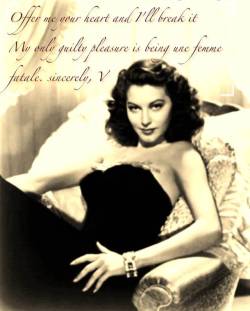Biography of a Feminist: Margaret Mead
752 views Ever since I was kid, the concept of femininity and masculinity intrigued me. I was always called a tomboy although my way of dressing was a lot of times girly. So I rebelled against these two concepts. I couldn’t understand how people defined them, and tried so hard to explain to every person who called me a tomboy that his idea of femininity is nothing but a social construct (I learned this word later on in my life). During my first research on the matter, I met Margaret Mead. In fact, she was one of the first people to propose that masculine and feminine characteristics reflected cultural conditioning (or socialization) not fundamental biological differences, but received a lot of criticism. In her studies she attempted to understand what are now called “gender roles”.
Ever since I was kid, the concept of femininity and masculinity intrigued me. I was always called a tomboy although my way of dressing was a lot of times girly. So I rebelled against these two concepts. I couldn’t understand how people defined them, and tried so hard to explain to every person who called me a tomboy that his idea of femininity is nothing but a social construct (I learned this word later on in my life). During my first research on the matter, I met Margaret Mead. In fact, she was one of the first people to propose that masculine and feminine characteristics reflected cultural conditioning (or socialization) not fundamental biological differences, but received a lot of criticism. In her studies she attempted to understand what are now called “gender roles”.
Mead is one of the most renowned anthropologists of all time; she is also a very controversial but respected writer and speaker in the mass media during the 1960’s. Her writings on the Samoan norms on sexuality informed the 1960’s sexual revolution. She conducted her study among a small group of Samoans, a village of 600 people on the island of Tau. She studied the development of girls in that society, and published the results in Coming of Age in Samoa. In the study she investigated adolescence lovemaking, and demonstrated that the transition of Samoan young girls into adult women went apparently without emotional crises. In 1983 an Australian researcher, Derek Freeman, criticized her in his book Margaret Mead and Samoa (1983), and challenged her findings claiming that she had ignored biological factors in favor of a theory of cultural determination of sex roles. However despite all the criticism and opposition, she was still a much respected anthropologist and her findings contributed to the development of the discipline and its introduction to the public. Mead learnt to observe human behavior ever since she was very young. Her grandmother, who home-schooled her, assigned her to take notes on her sisters’ behavior while they were still babies, encouraging Margaret to see emerging differences in temperament between the two girls. Mead recalled: “I learned to make these notes with love, carrying on what Mother had begun.”
Mead married three times, all three of her husbands were anthropologists. She had a daughter from her third marriage. She also had an exceptionally close relationship with her colleague and friend Ruth Benedict; they exchanged ideas and read all of each other’s writings until Benedict’s death in 1948. In her memoir With a Daughter’s Eye, Mary Catherine Bateson implies that the relationship between Benedict and Mead contained an erotic element. She also lived with anthropologist Rhoda Metraux from 1955 until her death in 1978. It is said that they had a romantic relationship that was expressed clearly in their letters published in 2006 with the permission of Mead’s Daughter.
The World War II period marked a shift in Mead’s work. She became interested in Global interdependence and got involved in international organizations working on human issues. Her famous quote “Never doubt that a small group of thoughtful committed citizens can change the world. Indeed, it’s the only thing that ever has” has become the slogan of many NGOs today.
When Mead was young, her father used to call her “punk”. When her brother, Richard, was born, her father called him “the boy-punk,” while she became known as “the original punk.” This was, Mead wrote, “a reversal of the usual pattern, according to which the girl is only a female version of the true human being, the boy. After her death in 1978, Mead’s name was added to the leading feminists of the century.





Leave a Reply